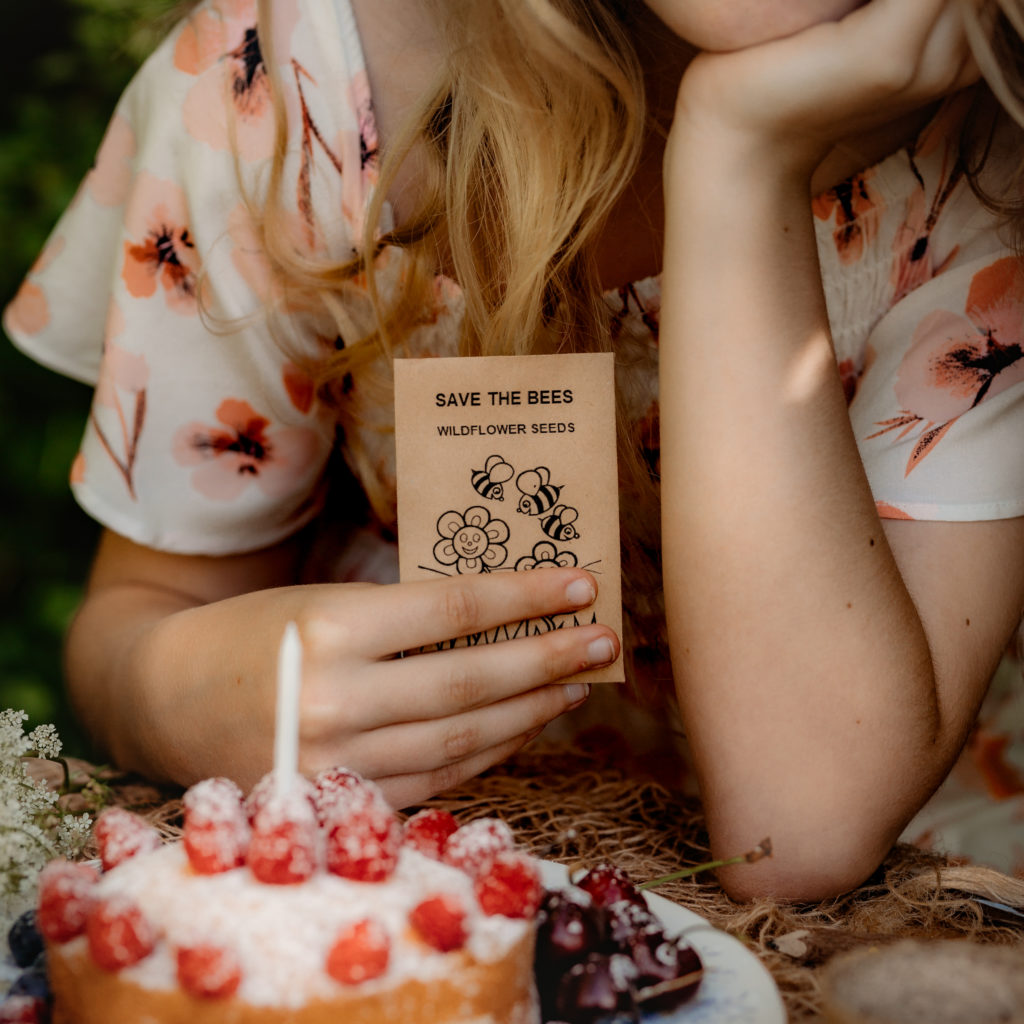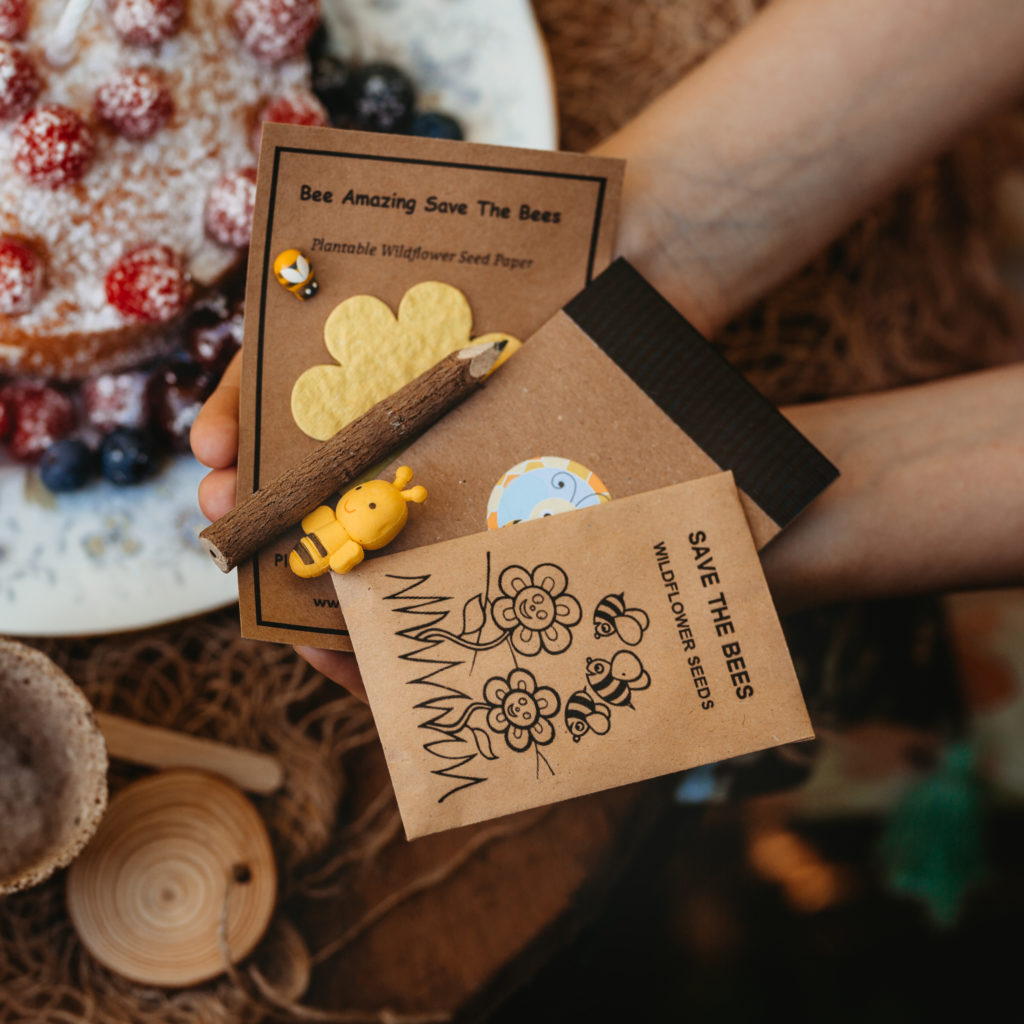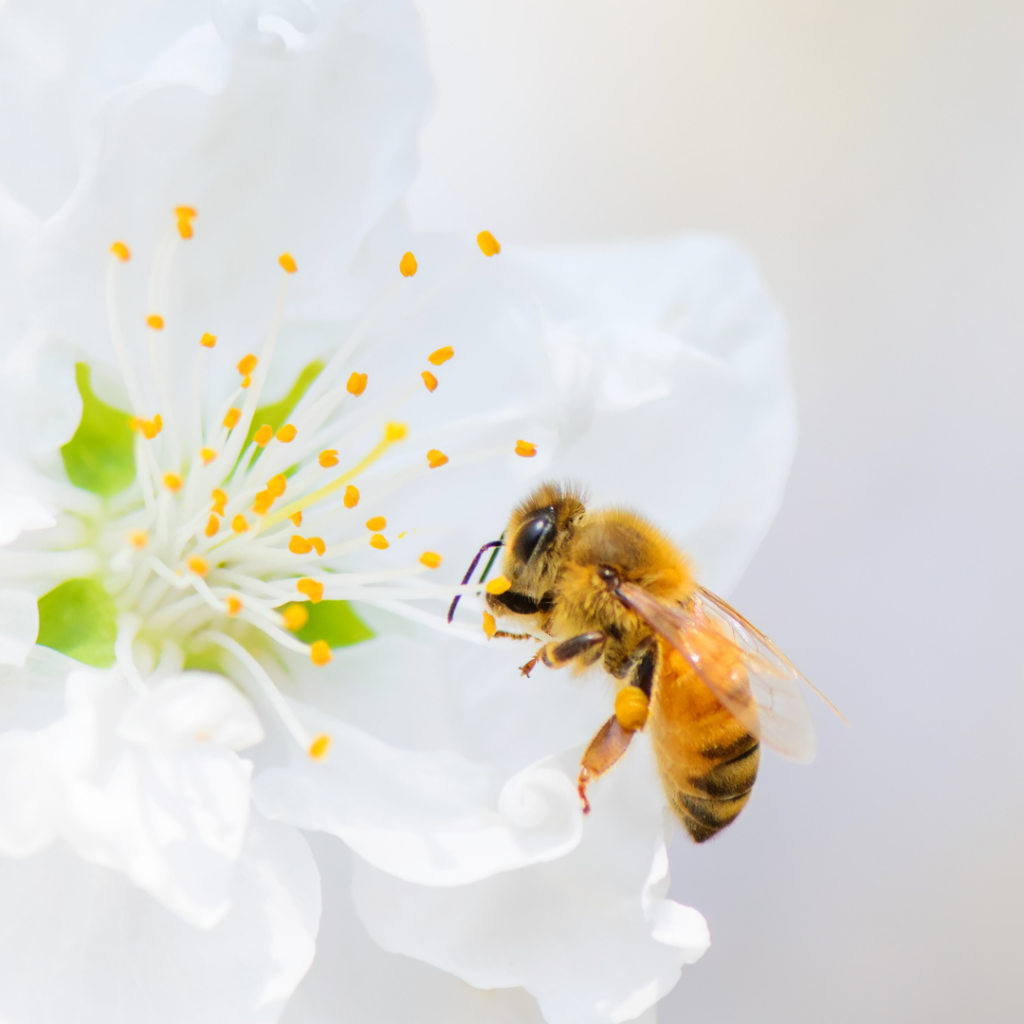WHY WE NEED TO PROTECT BEES?
Honey bees — wild and domestic — perform about 80 percent of all pollination worldwide. A single bee colony can pollinate 300 million flowers each day.
Role in the Ecosystem: Bees are a keystone species; if bees die off it will end most life. In nature, various animals depend on bees for their survival because their food sources – nuts, berries, seeds, and fruits – rely on insect pollination. Pollination also allows floral growth, which provides habitats for animals, including other insects and birds. Lastly, bees themselves, and the honey they produce, are a source of
food for many animals.
Ecosystem Services: While bee populations continue to decline, the production of food crops will decrease as well, as bee pollination is necessary for several important crops.
Bees are responsible for pollinating 35% of agricultural production and almost 90 different commercially grown food crops.
Easy Ways to Save the Bees:
Plant a Bee Garden
One of the largest threats to bees is a lack of safe habitat where they can build homes and find a variety of nutritious food sources. By planting a bee garden, you can create a habitat corridor with plants that are rich in pollen and nectar. You don’t need a ton of space to grow bee-friendly plants — gardens can be established across yards and in window boxes, flower pots, and planters.
Go Chemical-Free for Bees
Synthetic pesticides, fertilizers, herbicides, and neonicotinoids are harmful to bees, wreaking havoc on their sensitive systems. Avoid treating your garden and green spaces with synthetics. Instead, use organic products and natural solutions such compost to aid soil health and adding beneficial insects that keep pests away like ladybugs and praying mantises.
Provide Trees for Bees
Did you know that bees get most of their nectar from trees? When a tree blooms, it provides hundreds — if not thousands — of blossoms to feed from. Trees are not only a great food source for bees, but also an essential habitat. Tree leaves and resin provide nesting material for bees, while natural wood cavities make excellent shelters. With deforestation and development on the rise, you can help bolster bee habitats by caring for trees and joining tree-planting parties in your area.
Build Homes for Native Bees
Did you know that, with the exception of honeybees, most bees are solitary creatures? 70% of solitary bees live underground, while 30% live in holes inside of trees or hollow stems. Species like bumble bees build their nests in undisturbed land, and you can provide safe haven for them by leaving an untouched plot of land for them in your garden! “Bee condos” — which have small tube “apartments” — allow species like mason bees to take up residence. They’re easy to make or purchase.
Support Local Beekeepers and Organizations
Local beekeepers work hard to nurture their bees and the local community. The easiest way to show your appreciation is to buy locally-made honey and beeswax products. Many beekeepers use products from their hives to create soaps, lotions, and beeswax candles. Plus, local honey is not only delicious — it is made from local flora and may help with seasonal allergies!




